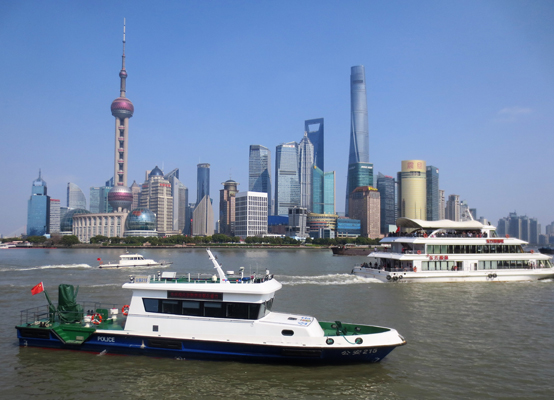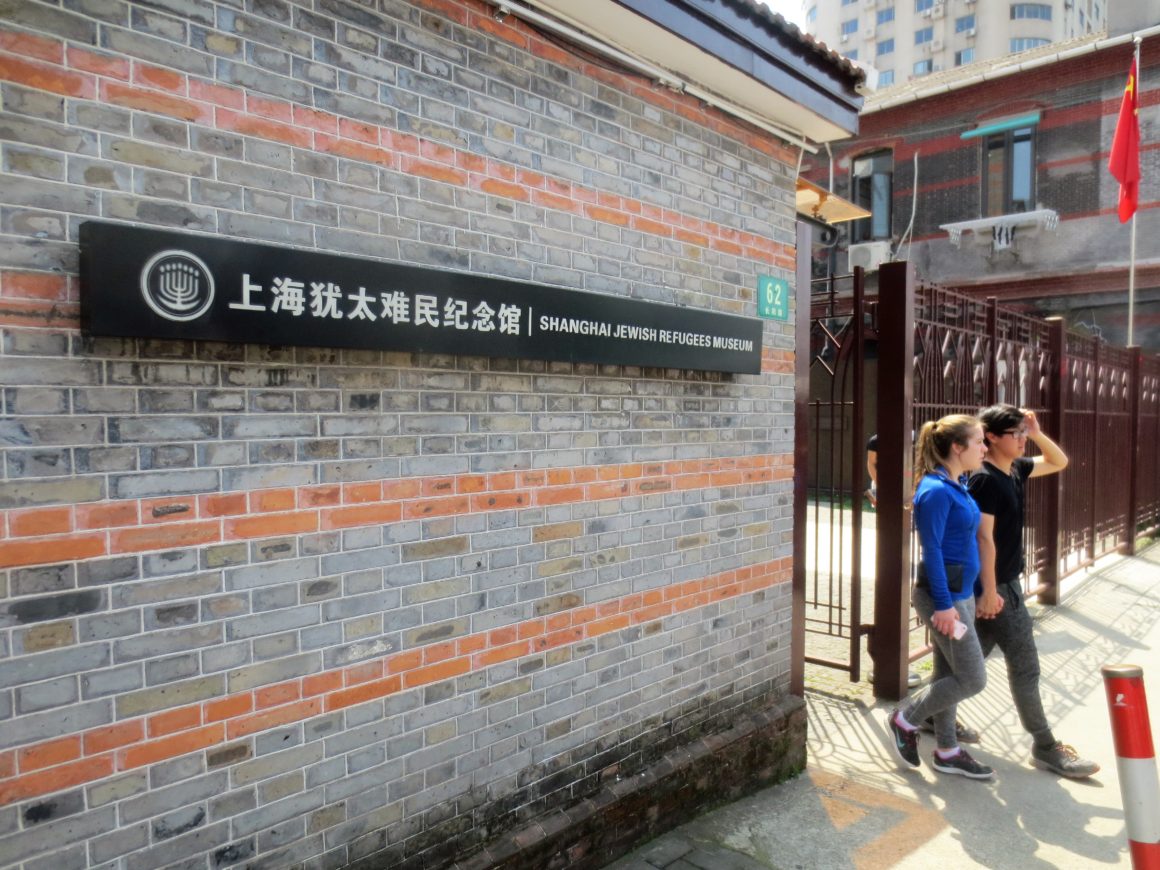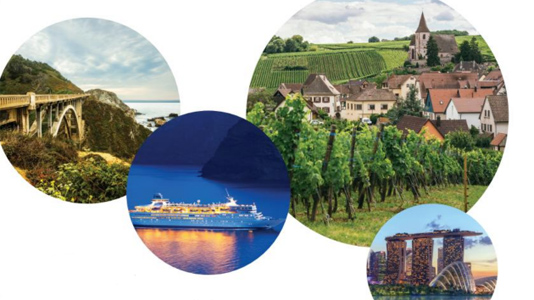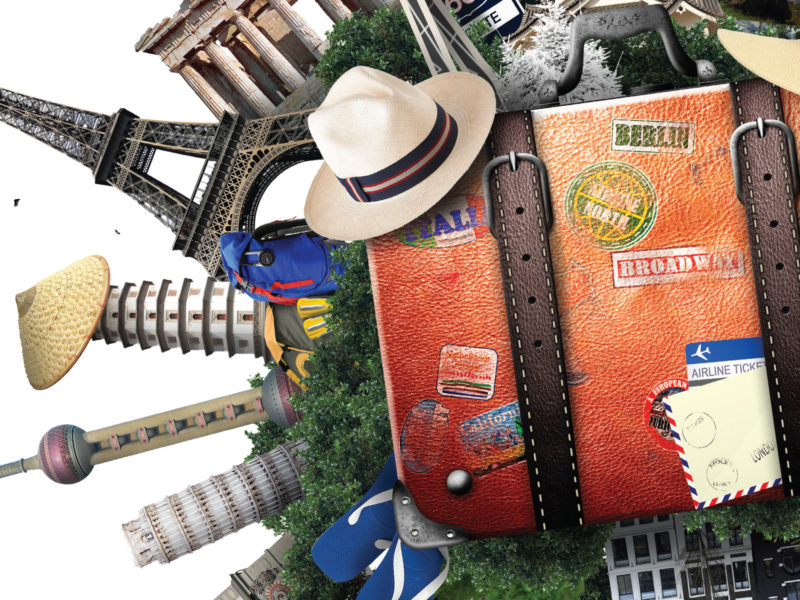Pictured above: Shanghai’s dramatic skyline. Photo by Dan Fellner
Shanghai is China’s largest city with 23 million people. It features one of the most dazzling skylines in the world, a booming economy and a compelling mixture of Eastern and Western cultures.
But not many people are aware that Shanghai also offers visitors a fascinating glimpse into the history of one of the most unique Jewish communities in the Far East. As a city that accepted about 20,000 Jewish refugees fleeing the Holocaust in Europe, Shanghai became known at the time as a “Noah’s Ark” for Jews who had no other place to go.
With only 24 hours to explore the city at the conclusion of a 14-day Asian cruise on the Holland America ship Volendam, I opted to take a half-day “Tour of Jewish Shanghai.” It was led by Dvir Bar-Gal, an Israeli-born journalist who has lived in Shanghai for the past 17 years.
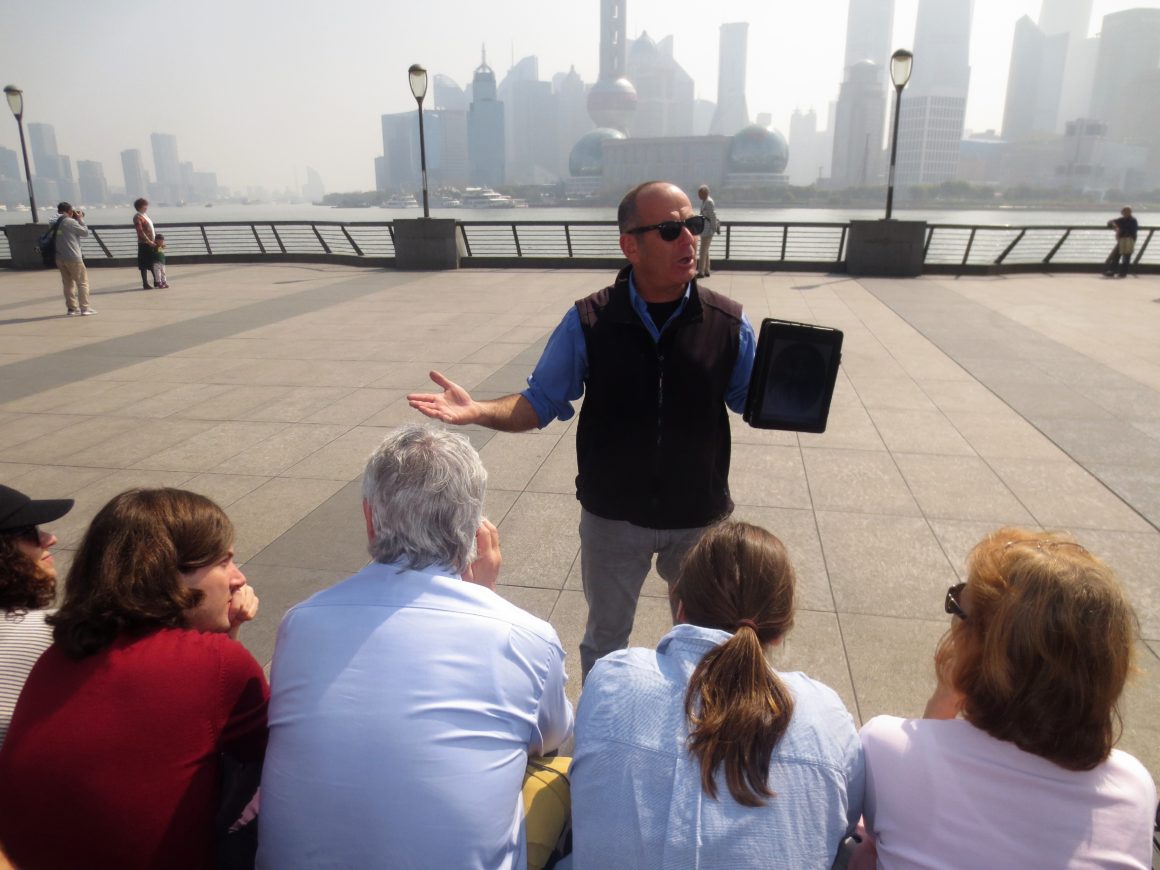
Tour guide Dvir Bar-Gal discusses Shanghai’s Jewish history on the city’s famous Bund. Photo by Dan Fellner
With a style that was part history professor, part stand-up comedian, Dvir taught our group of 15 tourists – mostly Americans – all about Shanghai’s Jewish past and took us to the sites that helped bring to life a Jewish community that once thrived here.
It was just a 20-minute walk from where the Volendam was docked to join the tour. Appropriately, we met at the Fairmont Peace Hotel, which was built by Sephardic Jews from Bagdad, who were part of the first wave of Jewish immigrants to Shanghai in the late 19th century. This group included two prominent families – the Sassoons and Kadoories.
“People came here with nothing and created an economic empire in the Far East,” notes Dvir about the Baghdadi immigrants.
The second wave of Jews arrived in the 1920s, Ashkenazim fleeing pogroms and revolutions in Russia.
From the Fairmont, our group walked one block to The Bund, Shanghai’s pedestrian riverfront with a spectacular view across the Huangpu River to the city’s enormous skyscrapers. It was at The Bund where Dvir told us about the third – and most famous – wave of Jewish immigrants.
From 1933 to 1941, Shanghai accepted about 20,000 Jewish refugees fleeing the Holocaust. Most came from Germany and Austria, which had stripped Jews of their citizenship and encouraged exile before turning genocidal. Outside of the Dominican Republic, Shanghai was the only place that allowed Jews to enter as it did not require a visa. In fact, by 1939 more European Jews had taken refuge in Shanghai than in any other city in the world.
Jewish life in Shanghai prospered during the 1930s. At one time, there were six working synagogues and about 10 Jewish newspapers. Jews lived harmoniously with the Chinese in a section of town called the Hongkou District, which was dubbed “Little Vienna” because so many Austrian Jews lived there.
During World War II, the Japanese occupied Shanghai, which ended the flow of foreign funds to the Jewish refugees, who were becoming increasingly impoverished. The Japanese also imposed restrictions on where Jews could live, creating a “Designated Area for Stateless Refugees,” better known as the Shanghai Ghetto. Conditions in the ghetto were difficult, but a vast majority of Shanghai’s Jews survived the Holocaust. Most emigrated to Israel, the United States, Australia and Hong Kong after the Communists took control of the government in 1949.
Dvir drove us by van to the city’s Hongkou District where we walked through narrow streets and parks lined with blooming cherry-blossom trees to explore the traces of what once had been bustling Jewish life in the area.
The highlight was a visit to the Shanghai Jewish Refugees Museum on Changyang Road, which contains exhibits, monuments and an exhibition hall in which more than 140 photos are displayed with a multi-screen projection system. Dvir served as an adviser to the Chinese government when it opened the museum in 2007.
The museum also houses the former Ohel Moshe Synagogue, built by Russian Jews in the 1920s. It later became the hub of Jewish life when the community was ghettoized in the 1940s. After the war, the synagogue was confiscated by the Communists and converted into a psychiatric hospital. It reopened in the 1990s and was later restored to its original architectural style in 2007. The building has been inscribed on the list of architectural heritage treasures of Shanghai.
There are currently no functioning stand-alone synagogues, so Shanghai’s current population of about 4,000 Jews have a choice of praying at one of three Chabad branches or in private venues.
Dvir says about 3,000 tourists take his tour every year, a majority of whom are Americans. He adds that before their arrival, many had no idea about the city’s rich and inspiring Jewish history.
“Some people have some knowledge about Jewish life here, but it is vague,” he says. “It comes to life when they take this tour.”
For information about booking a Jewish tour on a trip to Shanghai, email [email protected]. The cost for a half-day tour is about $70.
Dan Fellner of Chandler is a faculty associate at Arizona State University and freelance travel writer specializing in Jewish destinations. His website is global-travel-info.com


